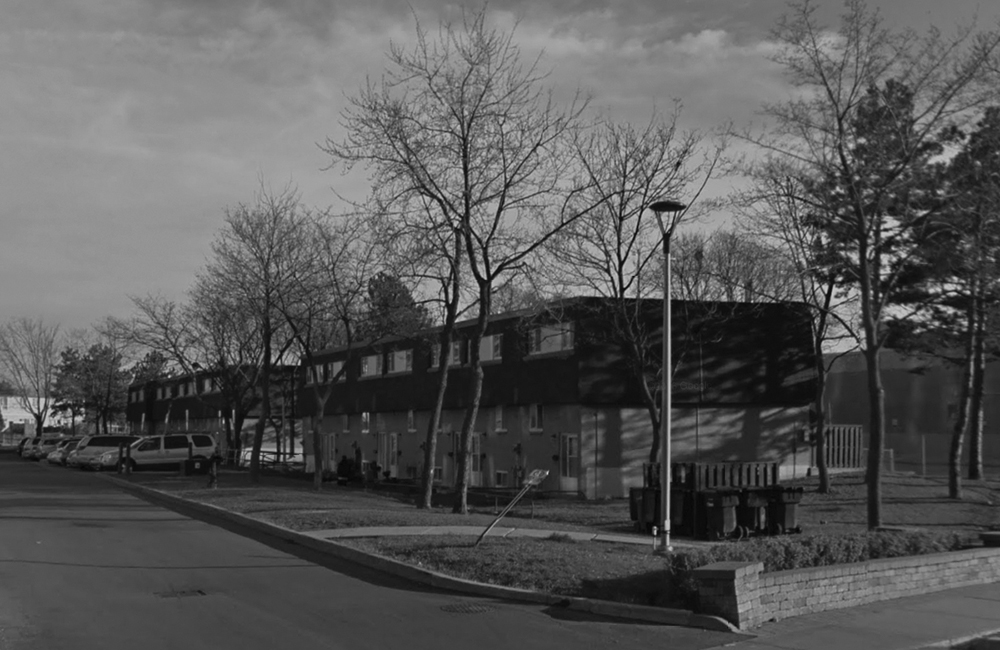Alex Kvaskov | News Editor
Featured image: The Jane-Finch area is home to several darelict community housing developments. | Photo courtesy of Google Street View
Low-income Torontonians are caught between a rock and a hard place, as a booming housing market on one hand, and deteriorating affordable housing and lack of affordable rentals on the other, are pricing them out of a home.
Nicola Holness, community outreach counsellor at York’s Community & Legal Aid Services Programme, says it’s next to impossible for people to get into the housing market. The average sale price of a Toronto home in May neared $800,000.
However, Dwight Gordon, member of Jane Finch Action Against Poverty, questions whether there is a housing bubble in the first place because the market isn’t expected to have a rough landing.
The real issue, says Gordon, is that new housing is very expensive, possibly even outside the reach of middle class families.
“If enough of the new housing was built to jack up the vacancy rate to, say, five per cent, that might put pressure on some landlords to lower their rent,” says Gordon. Though he wouldn’t count on it.
The goal for students, says Holness, is affordable housing which is set below market rents, and is “very limited,” in her words.
Toronto’s real estate boom has produced thousands of condos, but very few rental apartments, and lower-income households can’t afford the limited number of market rent apartments that are available, according to Gil Hardy of the City’s Affordable Housing Office.
“There is a shortage of affordable rental housing: vacancy rates reduced to 1.6 per cent — almost one-third of 2005 rates. There are some 97,000 households on the subsidized housing waiting list,” Hardy adds.
Meanwhile, rents are rising faster than average incomes, with average rent for a one-bedroom apartment now $1,110, compared to $950 in 2010.
“If they can’t find anything affordable, then they’re going to market rent. If you’re low income, you’re likely going to have a roommate or two in order to make your rent. I can only assume for low-income people, going to market rent by themselves is impossible,” says Holness.
Gordon concurs. Beyond a roommate or two, entire families may “team up” to rent a house or apartment. Such cramped spaces raise privacy and safety concerns, making it more difficult for students to study, he says.
Making the shortage of affordable rental housing worse is the fact that available housing tends to be of low quality. Toronto Community Housing, or TCH, is facing operating and capital budget deficits, to the point where some housing complexes are falling apart. The situation is liable to be worse if proposed cuts to City agencies are made in next year’s budget, according to Holness.
“There are some TCH buildings that are even boarded up and considered unlivable and will definitely be demolished. I think right now, as it is, under the City’s portfolio, the city is unable to afford it. They can’t afford the maintenance,” she adds.
Certain locations around York, such as the Shoreham and Firgrove units, fall into this category. Holness says some of the units are in such poor shape that it may not be worth renovating them at all. However, tearing down the building would displace current residents.
TCH provides three categories of affordable housing, including rent-geared-to-income, or RGI, affordable rent, and market rent. RGI units are the most heavily used and subsidized, with TCH stating that 93 per cent of its tenants live in RGI housing, where rents are set to 30 per cent of tenants’ gross incomes.


